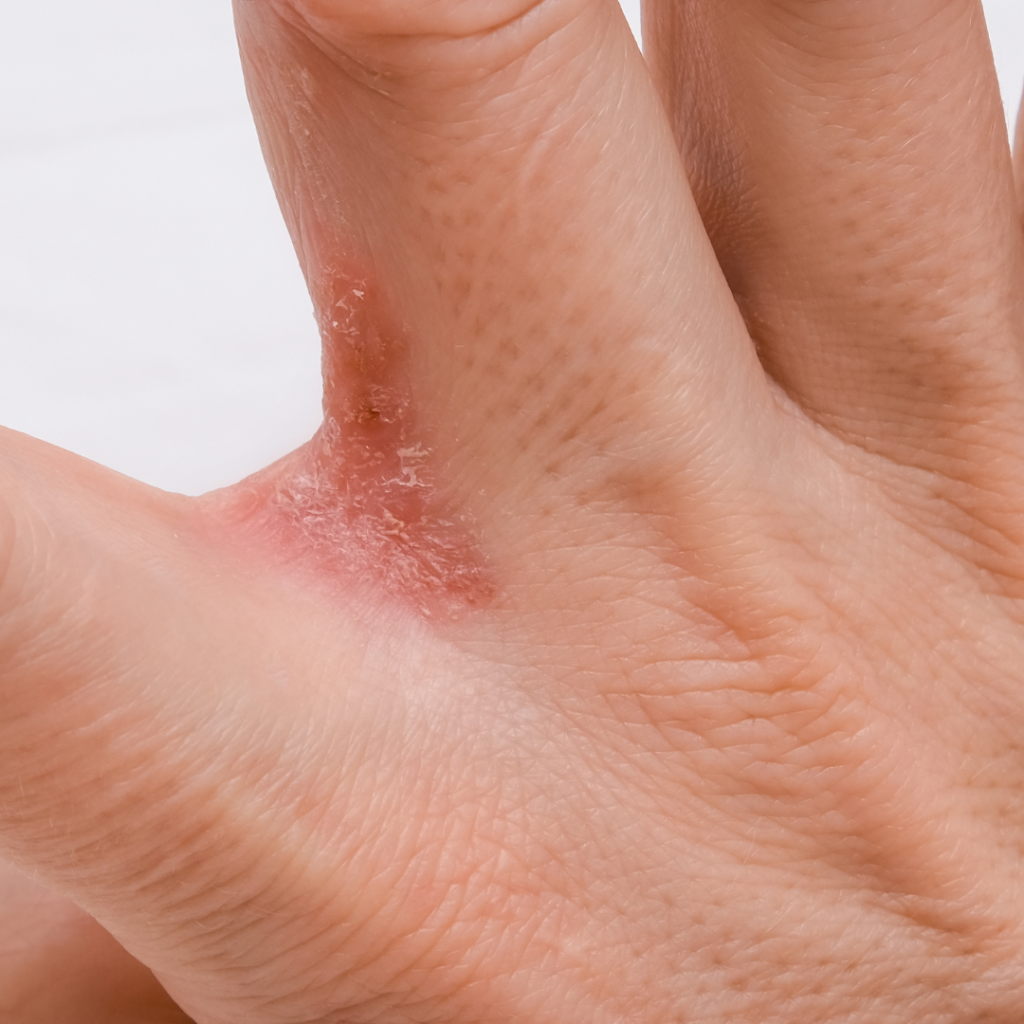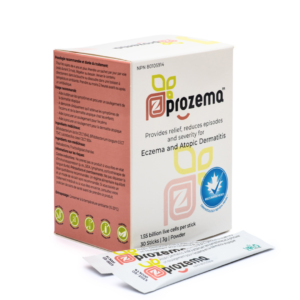
Types Of Eczema On Hands
Hand Eczema | Different Types | Dry Skin On Fingers | Blisters | Stress | Treatment | Summary
Types Of Eczema On Hands
Eczema is a common skin condition that affects millions of people worldwide. While it can occur anywhere on the body, your hands are a particularly vulnerable area. The hands are constantly exposed to various environmental factors, which can trigger or worsen eczema symptoms.
Dealing with eczema on your hands can be tough, and it’s important to know how regular tasks can make it worse. Simple things like washing your hands a lot, using strong cleaning products, or touching rough materials can make your eczema worse. Knowing your type of eczema can help you create a management plan.
Types of Eczema
1. Atopic Dermatitis
Atopic dermatitis is the most common type of eczema and can affect the hands. It is characterized by red, itchy, and inflamed skin. People with a family history of allergies or asthma are more susceptible to atopic dermatitis.
2. Contact Dermatitis
Contact dermatitis can be caused by exposure to irritants or allergens such as harsh soaps, detergents, or certain metals like nickel. It can lead to redness, swelling, and blisters on the hands.
3. Dyshidrotic Eczema
Dyshidrotic eczema primarily affects the palms of the hands and the soles of the feet. It is characterized by small, itchy blisters that can be painful and cause discomfort.

Eczema on Fingers
Eczema on the fingers can be particularly bothersome, as it can interfere with daily activities and cause pain. It often presents as dry, cracked skin, redness, and itching. To manage eczema on the fingers, it’s important to identify and avoid triggers like harsh chemicals and detergents. Applying moisturizers regularly can also help keep the skin on your hands and fingers hydrated.
Eczema Blisters on Hands
Dyshidrotic eczema is known for its characteristic blistering, which can be intensely itchy and painful. These blisters can be triggered by factors such as stress, allergies, or exposure to certain metals. To manage these symptoms, it’s essential to keep the affected areas clean and dry and wear protective gloves when necessary to prevent further irritation.
Stress-Related Eczema on Hands
Stress can have a significant impact on eczema, leading to flare-ups or worsening of symptoms. Stress-related eczema can affect anyone, and it often presents as redness, itching, and inflammation on the hands and other parts of the body. To manage stress-related eczema, consider stress-reduction techniques that work for you. Additionally, maintaining a proper skincare routine and avoiding triggers can help keep your eczema symptoms under control.
Hand Eczema Treatment
There are several ways that you can use to treat the symptoms of hand eczema. From moisturization to probiotics, read on to find treatment options that may work for you.
1. Moisturize Regularly:
One of the most critical aspects of managing hand eczema is keeping your skin well-hydrated. Use fragrance-free moisturizers throughout the day, especially after washing your hands.
2. Avoid Irritants:
Identify and avoid substances that irritate your skin, such as harsh soaps, detergents, and chemicals. Wear gloves when cleaning or handling irritants.
3. Emollient Ointments:
Emollient ointments, like petroleum jelly or thicker creams, can provide a protective barrier for your skin. Apply them generously before bedtime to lock in moisture.
5. Avoid Scratching:
Scratching can worsen eczema symptoms and lead to infections. Keep your nails short and pat your skin to relieve any itchiness instead of scratching it.
6. Topical Corticosteroids:
In cases of moderate to severe hand eczema, a dermatologist may prescribe topical corticosteroids to reduce inflammation and relieve itching. Follow the prescribed treatment plan carefully and inform yourself of any potential side effects.
7. Probiotics:
Increase your probiotic intake to heal your gut as the gut and skin are connected through the gut-skin axis. Look for the strains Bifidobacterium lactis CECT 8145, Bifidobacterium longum CECT 7347, and Lactobacillus casei CECT 9104 as their blend has been clinically proven to reduce the symptoms of eczema and atopic dermatitis.

Conclusion
Eczema on the hands can be challenging to manage, but with the right knowledge and proper care, you can reduce your symptoms and improve your quality of life. It is recommended that you try to identify your specific eczema type, avoid triggers, and keep your skin moisturized. Stress management is also crucial, and finding an eczema management plan that works for you can help you have better control over any flare-ups. If the eczema on your hands start affecting your daily life, talk to your healthcare practitioner or dermatologist. They can help curate a management plan that fits your lifestyle.
References
Healthline: Types of Eczema: Symptoms, Causes, Diagnosis, and Treatment
National Eczema Association: Hand Eczema | National Eczema Association
National Eczema Association: Dyshidrotic Eczema | National Eczema Association
Eczema.org: Hand Eczema – Information & Advice | National Eczema Society
Medical News Today: Hand eczema: Symptoms, treatment, and home remedies
